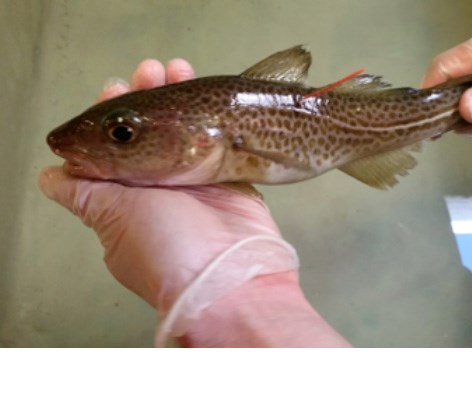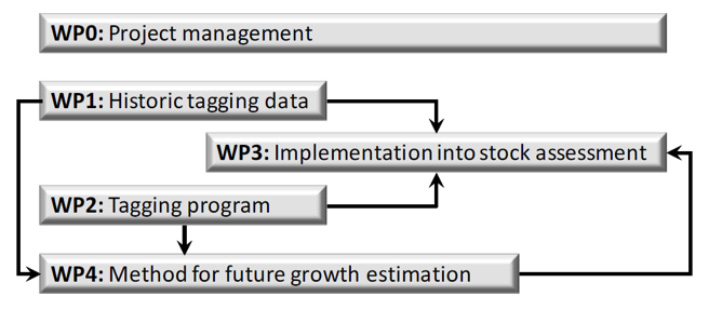Contact
Michele Casini, Professor
Department of Aquatic Resources, Institute of Marine Research, SLU
michele.casini@slu.se, +46 10 478 40 16, +46 761-26 80 07

Tagging Baltic Sea cod (TABACOD)
The TABACOD project has ended, and this webpage is not fully updated. Download the final project report with results and conclusions at the project website
--------------------------------------------------
The problem
The International Council for the Exploration of the Sea (ICES) is not currently able to provide robust biological fisheries advice to the EU Commission for the management of the Eastern Baltic cod stock. One of the key issues that prevent understanding the present status of this cod stock is the lack of reliable age information and growth rates estimates, which hamper the use of analytical methods of stock assessment. The objective of the tagging project is to solve this problem for a better fisheries management.
The project is practice
Tagging is one of the most reliable methods to improve age determination and provide estimates of growth. The project runs 2016-2019. Cod are caught, tagged with external and internal tags (the latter with chemical marks in the ear bones) and released. Tagging is done during three years (2016-2018) in the southern and central Baltic Sea. The countries involved are Sweden, Denmark, Germany and Poland. Commercial and recreational fishers recapturing tagged fish receive an award for delivering the fish and the tags to the respective responsible national Institutes. Cod tagging have been done before in the Baltic Sea, but never at such a big scale and with the ultimate aim to improve stock assessment for management purposes.
Tagging is now made for 3 years. The project is now summarising the information received so far and hopes to get some more recaptures.

Relevance and expected results
The project will provide basic and crucially needed biological information to estimate the current growth rate of cod and to improve cod age determination, for a direct application into stock assessment models and ICES fisheries advice to the EU Commission. Additional expected results are improved knowledge on cod migration routes, extent of mixing between Eastern and Western Baltic cod stocks and estimation of fishing mortality.
Role of SLU Aqua
SLU Aqua has a central role in the coordination of the project together with DTU in Denmark. SLU Aqua is also responsible for the application of the growth data collected from tagging into stock assessment.
Personnel involved at SLU: Monica Mion, Magnus Andersson, Peter Jakobsson, Joakim Hjelm, Annelie Hilvarsson, Roman Motyka, Anders Svenson & Michele Casini.
Michele Casini, Professor
Department of Aquatic Resources, Institute of Marine Research, SLU
michele.casini@slu.se, +46 10 478 40 16, +46 761-26 80 07
Read more (project website): http://www.tabacod.dtu.dk/